The Kriegsmarine was the navy of Germany from 1935 to 1945. It superseded the Imperial German Navy of the German Empire (1871–1918) and the inter-war Reichsmarine (1919–1935) of the Weimar Republic. The Kriegsmarine was one of three official branches, along with the Heer and the Luftwaffe, of the Wehrmacht, the German armed forces from 1935 to 1945.
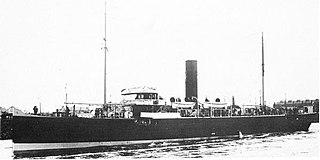
Q-ships, also known as Q-boats, decoy vessels, special service ships, or mystery ships, were heavily armed merchant ships with concealed weaponry, designed to lure submarines into making surface attacks. This gave Q-ships the chance to open fire and sink them. The use of Q-ships contributed to the abandonment of cruiser rules restricting attacks on unarmed merchant ships and to the shift to unrestricted submarine warfare in the 20th century.
HMT Warwick Deeping (H136) was a naval trawler of the British Royal Naval Patrol Service during World War II, sunk off the Isle of Wight in October 1940.
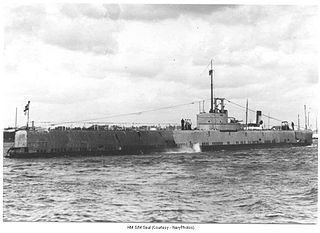
HMS Seal was one of six Grampus-class mine-laying submarines of the Royal Navy. She served in the Second World War and was captured by the Kriegsmarine and taken into German service as UB, one of several captured subs. She was the only submarine the Germans captured at sea during World War II. Her capture allowed the Germans to correct a critical fault in their U-boat torpedoes.

HMS Sportsman was a third-batch S-class submarine built for the Royal Navy during World War II. Completed in 1942, she spent most of the war serving in the Mediterranean Sea. After an initial patrol off Norway, she sank the heavy transport Général Bonaparte in the Mediterranean in 1943 and missed a French oil tanker. She was heavily damaged after a mistaken attack by an Allied bomber, and was sent east after repairs to participate in operations in the Black Sea. After the operation was cancelled, Sportsman patrolled the Aegean Sea, sending several Greek and German ships to the bottom. She sank the German transport SS Petrella in early 1944 despite it being clearly marked as a prisoner-of-war ship, killing 2,670 out of 3,173 Italians aboard. Sportsman sank several more ships, and suffered minor damage when she was detected and sighted while attempting to attack a convoy.
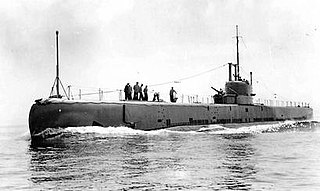
HMS Narwhal (N45) was one of the six ship class of Grampus-class mine-laying submarine of the Royal Navy. She was built by Vickers Armstrong, Barrow and launched 29 August 1935. She served in the Second World War in home waters. She was lost in the North Sea on 23 July 1940, probably sunk by German aircraft.

HMS Tigris was a T-class submarine of the Royal Navy. She was laid down at Chatham Dockyard and launched in October 1939.

HMS Torbay (N79) was a T-class submarine of the Royal Navy. She was laid down at Chatham Dockyard and launched on 9 April 1940.

HMS Ursula was a U-class submarine, of the first group of that class constructed for the Royal Navy. The submarine entered service in 1938 and saw action during the Second World War in the North and Mediterranean Seas. In 1944, Ursula was transferred to the Soviet Navy and renamed V-4. She remained in Soviet service until 1950 when the submarine was returned to the United Kingdom and was sold for scrap in May 1950.
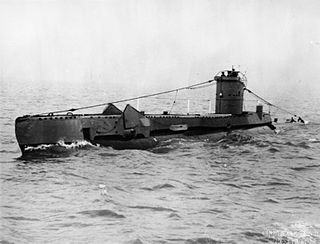
HMS Untiring (P59) was a Royal Navy U-class submarine built by Vickers-Armstrong. So far she has been the only ship of the Royal Navy to bear the name Untiring. After the war, she was loaned to the Greek Navy and renamed Xifias (Y-10).

HMS H49 was a British H-class submarine built by William Beardmore and Company, Dalmuir. She was launched on 15 July 1919 and commissioned on 25 October 1919. The submarine saw active service in the Second World War, but was sunk off the Netherlands by German patrol vessels on 18 October 1940.
Vorpostenboot, also referred to as VP-Boats, flakships or outpost boats, were German patrol boats which served during both World Wars. They were used around coastal areas and in coastal operations, and were tasked with – among other things – coastal patrol, ship escort, and naval combat.
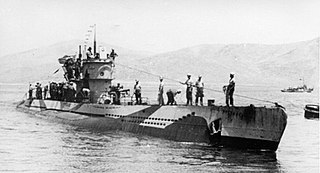
German submarine U-81 was a Type VIIC U-boat of the navy (Kriegsmarine) of Nazi Germany during World War II, famous for sinking the aircraft carrier HMS Ark Royal.
German submarine U-343 was a Type VIIC U-boat of Nazi Germany's Kriegsmarine during World War II. The submarine was laid down on 1 April 1942 at the Nordseewerke yard at Emden, launched on 21 December 1942 and commissioned on 18 February 1943 under the command of Leutnant zur See Wolfgang Rahn.

The Arctic Circle defining the "midnight sun" encompasses the Atlantic Ocean from the northern edge of Iceland to the Bering Strait in the Pacific Ocean. Military activity in this area between 1939 and 1945 is often considered part of the Battle of the Atlantic or of the European Theatre of World War II. Pre-war navigation focused on fishing and the international ore-trade from Narvik and Petsamo. Soviet settlements along the coast and rivers of the Barents Sea and Kara Sea relied upon summer coastal shipping for supplies from railheads at Arkhangelsk and Murmansk. The Soviet Union extended the Northern Sea Route past the Taymyr Peninsula to the Bering Strait in 1935.

HMS Aldenham was an escort destroyer of the Type III Hunt class. The Royal Navy ordered its construction in July 1940. Upon completion in February 1942, she was deployed to convoy escort duty. Aldenham is one of the ships credited with the sinking of the U-587 on 27 March 1942. After circumnavigating Africa, she joined the Mediterranean Fleet, escorting convoys between Alexandria, Malta and Tobruk. She took part in the Allied invasion of Sicily, landings at Salerno and Anzio, the Dodecanese campaign and Operation Dragoon before being assigned to the Adriatic campaign.

HMS Albrighton was a Type III Hunt-class destroyer built for the British Royal Navy. She entered service in February 1942, first carrying out an attack on German ships in the English Channel then taking part in the Dieppe Raid, rescuing survivors from the sinking destroyer HMS Broke. Albrighton was next assigned to search for and destroy the German auxiliary cruiser Komet, then escorted a convoy to Gibraltar in prevision of the Allied landings in North Africa. Between December 1942 and April 1943, she participated in the sinking of three more Axis ships with the First Destroyer Flotilla. During the Normandy Landings in June 1944, Albrighton served as a headquarters ship, then sank two German trawlers in the weeks after the invasion. After being converted to a destroyer in early 1945, she was damaged in a collision with a Landing Ship, then was assigned to the British Eastern Fleet. However, the war ended before she was deployed and Albrighton went into reserve.
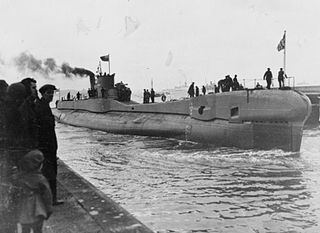
The Barents Sea campaign in 1941 was a submarine operation in the Arctic waters of the Barents Sea during World War II. It was a combined Soviet and British campaign, with boats departing from Polyarny to harass German shipping along the Norwegian coast.
V 801 Max Gundelach, originally designated PG-555, was a German fishing trawler which was converted into a Vorpostenboot patrol boat and placed in the 8th Picket Boat Flotilla during World War II.
M 1507 Teutonia was a German fishing trawler that was requisitioned by the Kriegsmarine in the Second World War for use as an auxiliary minesweeper. Built as Teutonia, she served as M 1507 Teutonia, the vorpostenbootV 204 Teutonia and M 4628 Teutonia. She became the French fishing trawler Rouget post-war and was scrapped in 1961.













